Cars provide a sense of freedom and ease of movement. They also change how their owners manage their day-to-day lives. However, this can easily be undermined by the cost and responsibility attached to maintaining a car in good condition. It can also be stressful and frustrating to keep all the car’s maintenance information.
Therefore, the owner must consider the benefits and responsibilities related to buying the car. However, car owners can take measures to ease this aspect of their relationship with their cars by simply using a vehicle maintenance log.
A Vehicle Maintenance Log is a document used to provide a complete record of the condition and repairs carried out on a car.
It keeps records of the cost associated with the repairs and who completed them. A comprehensive log can help support a car owner’s insurance claim, identify unnecessary repair costs by the mechanic, and ensure driver safety. It can also aid in preventative maintenance, which ensures that the problems or issues with the car are identified early, saving the car owner from hefty costs in the future. Vehicles used commercially, like taxes, rideshare, and trucks, benefit the most from using the log.
Significance
The maintenance log enables the car owner to keep track of the maintenance work done on the car. Secondly, it allows the owner to have a good resale value by providing information on the work that has been done on the vehicle. It also allows the car owner to keep up with the car’s maintenance schedule, ensuring that the car is always in perfect condition.
Lastly, the vehicle log can help identify future car problems and help save the owner money and time spent making repairs or buying car parts.
Vehicle Maintenance Log Templates
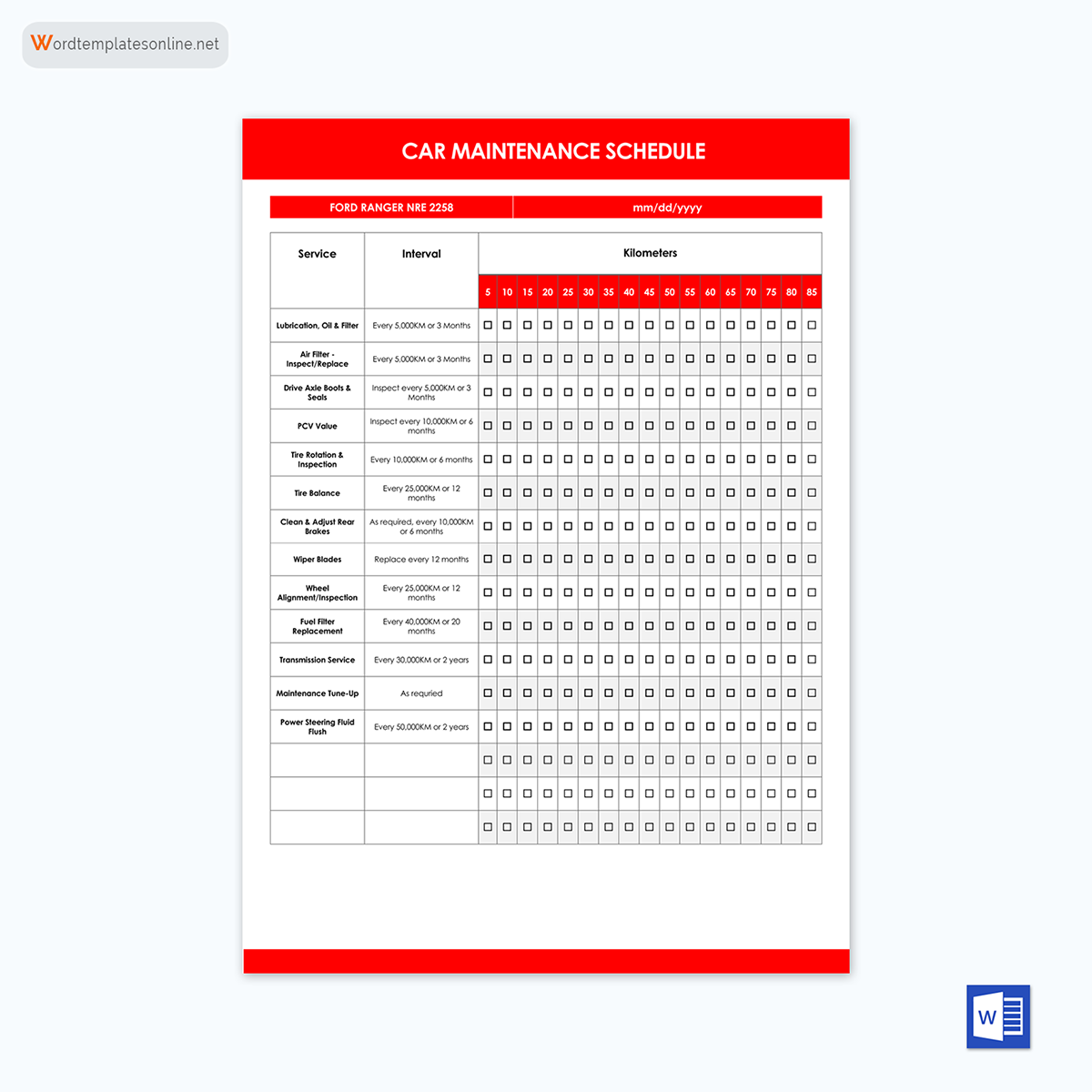
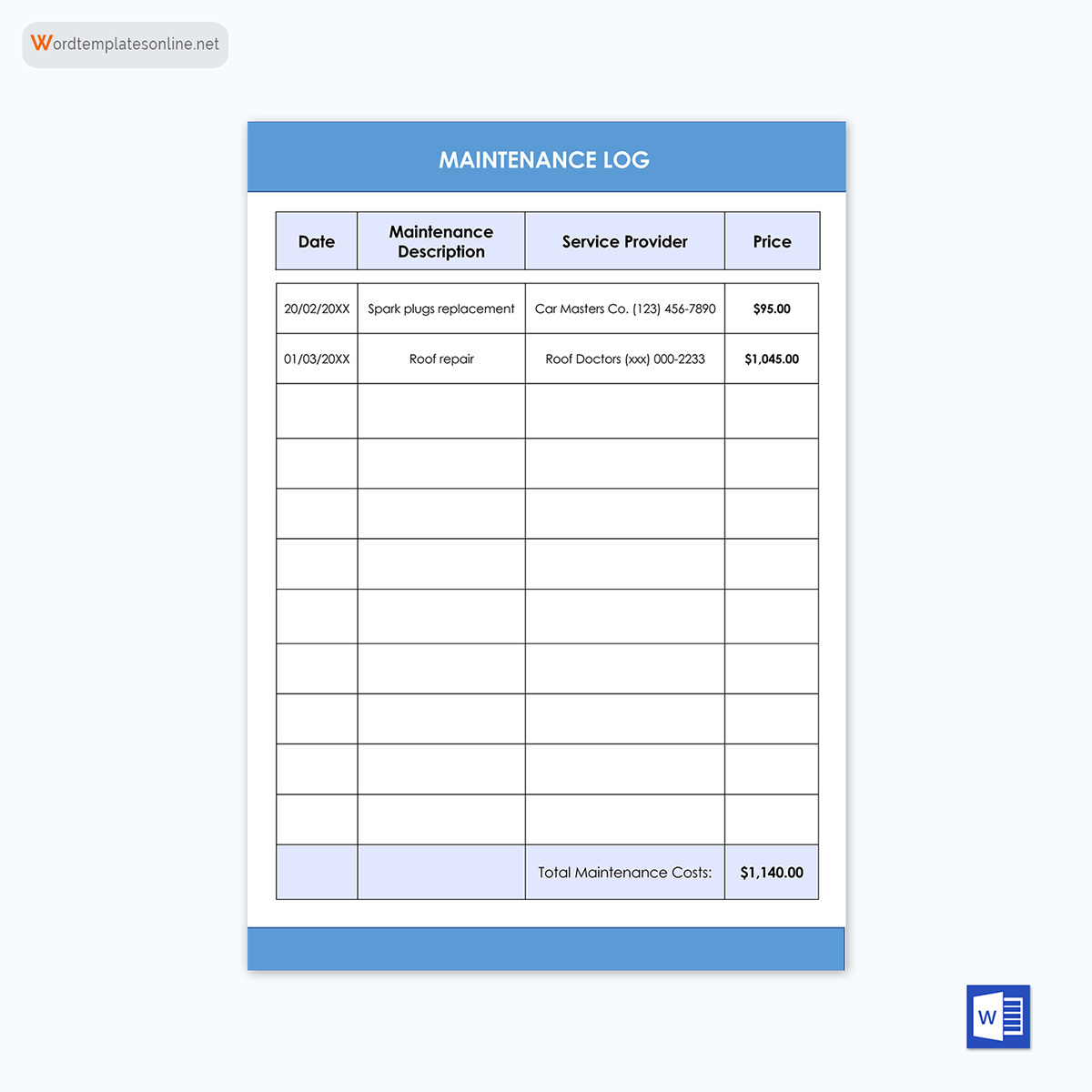
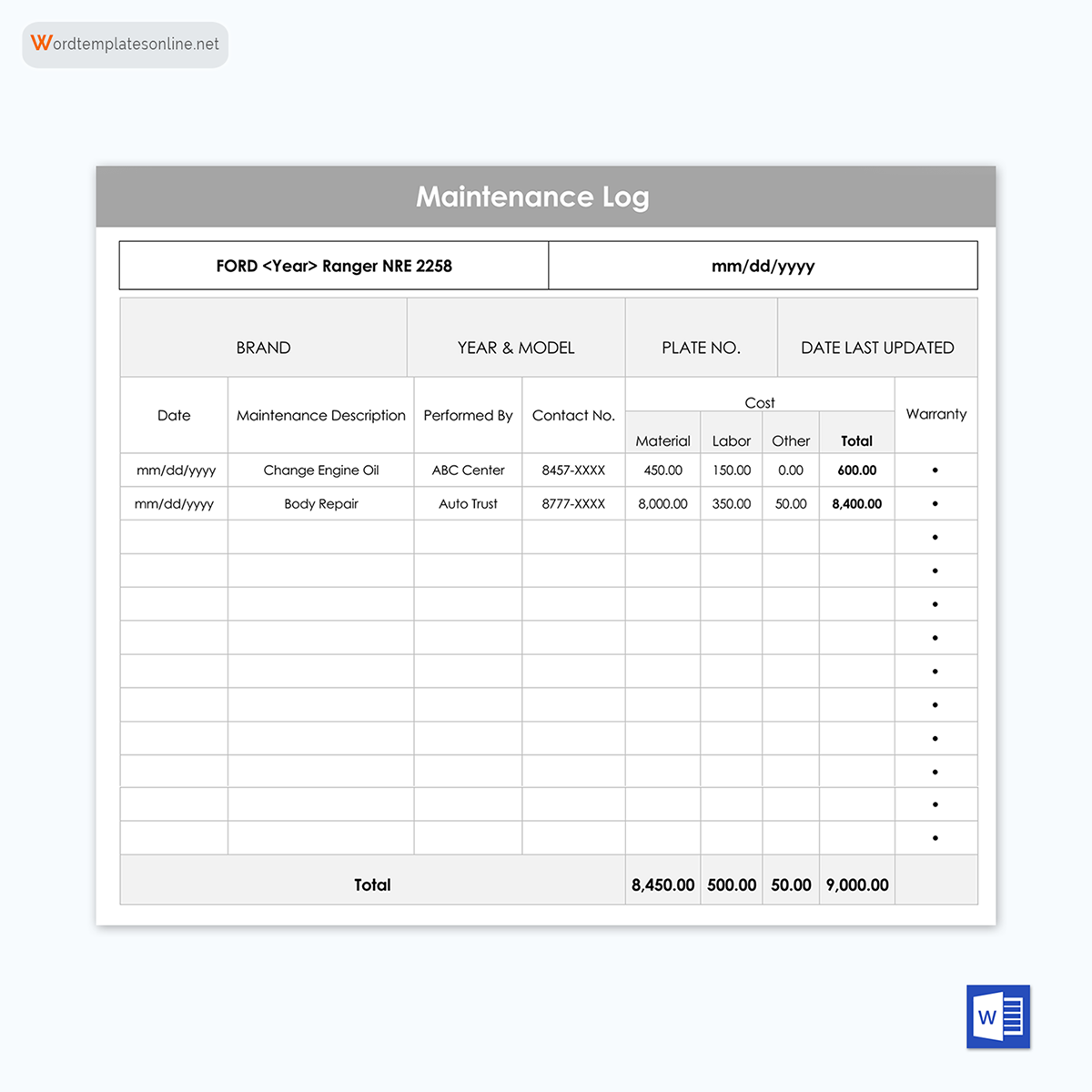
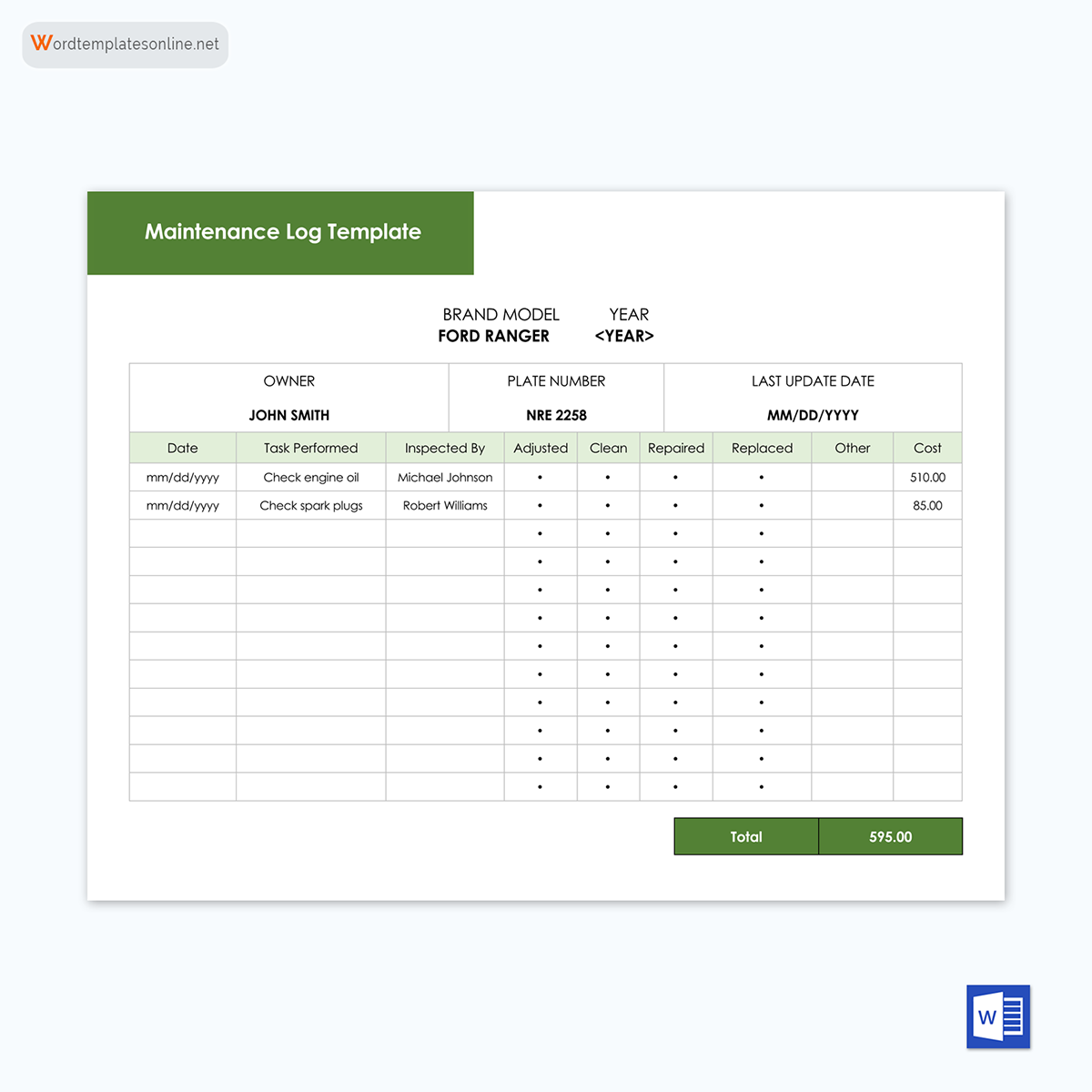
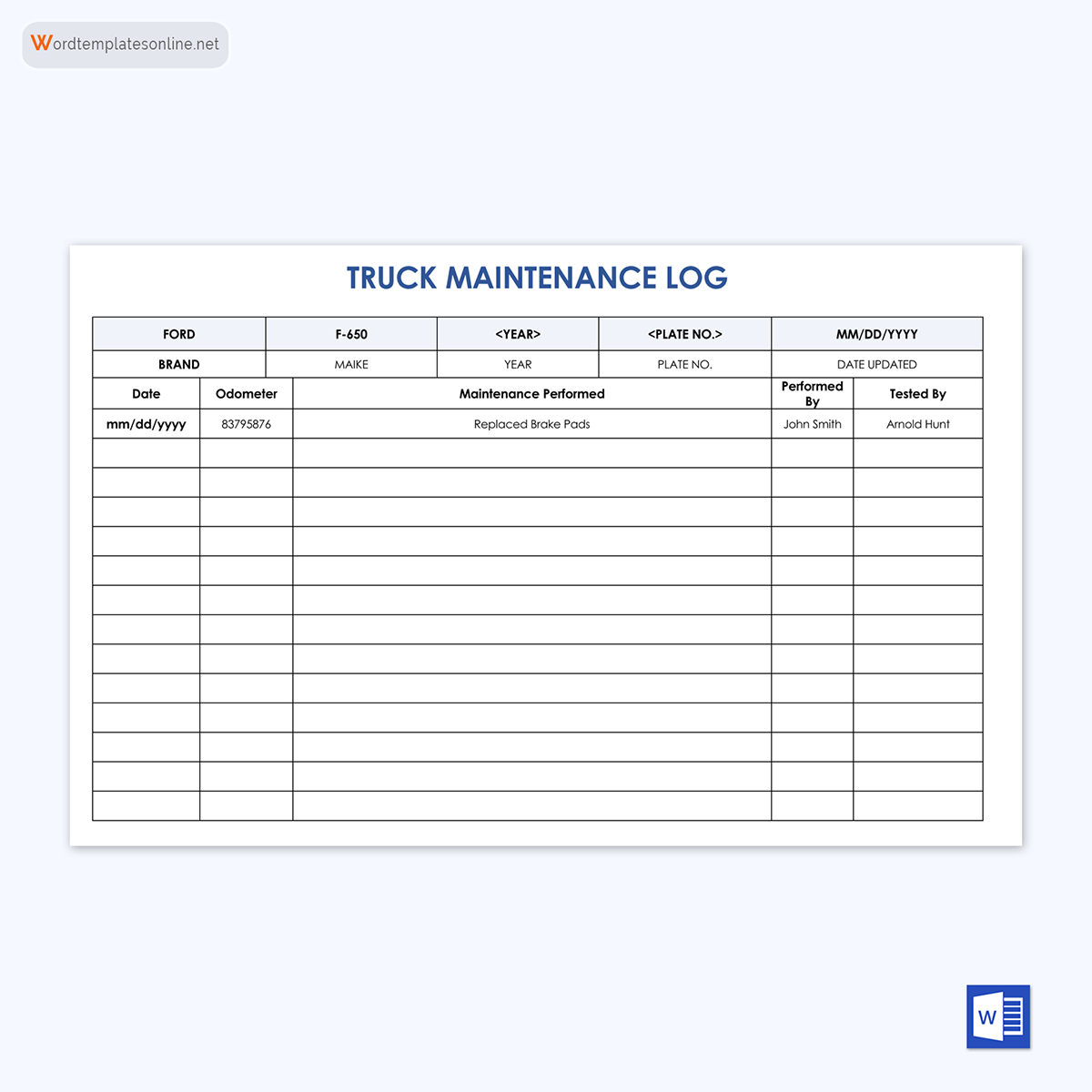
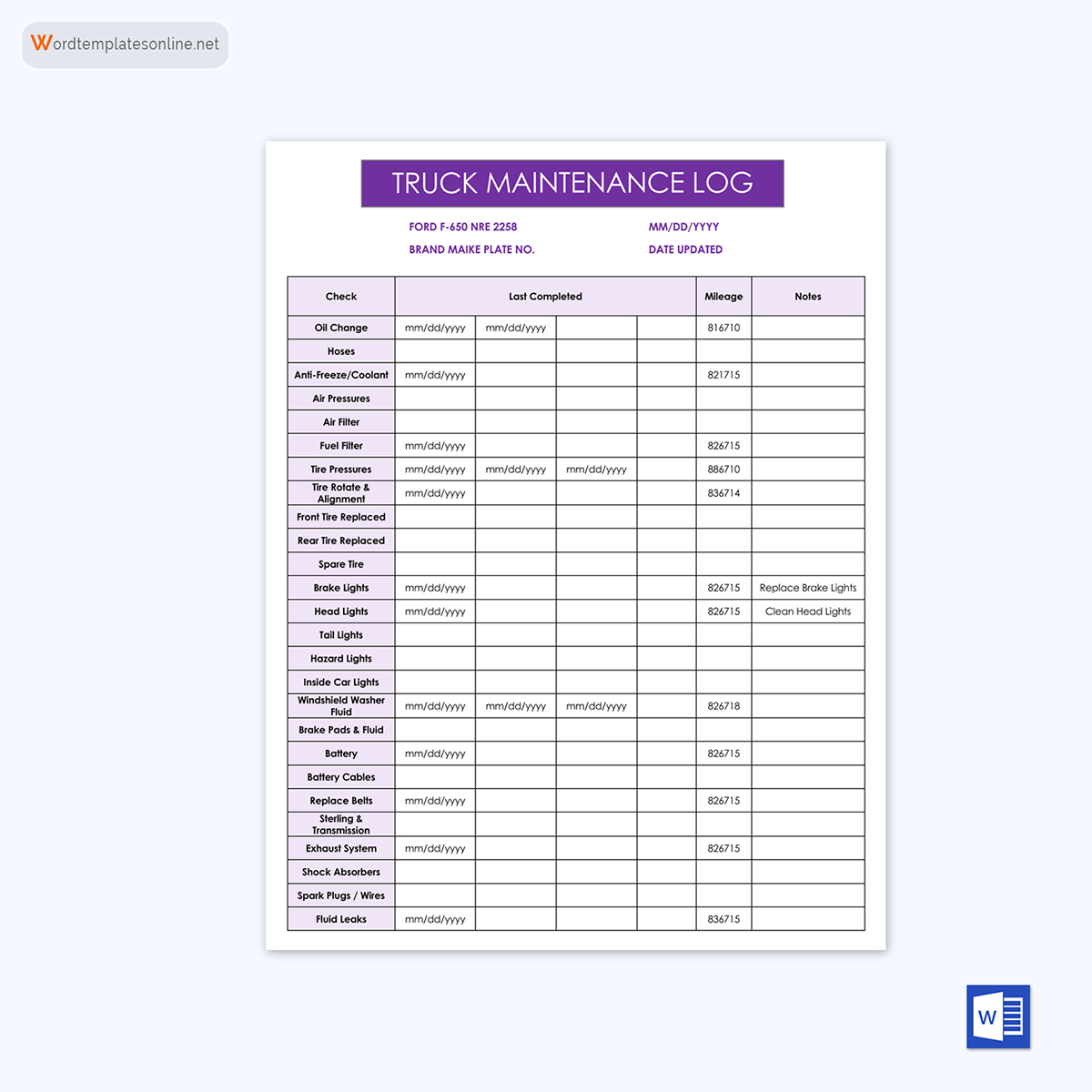
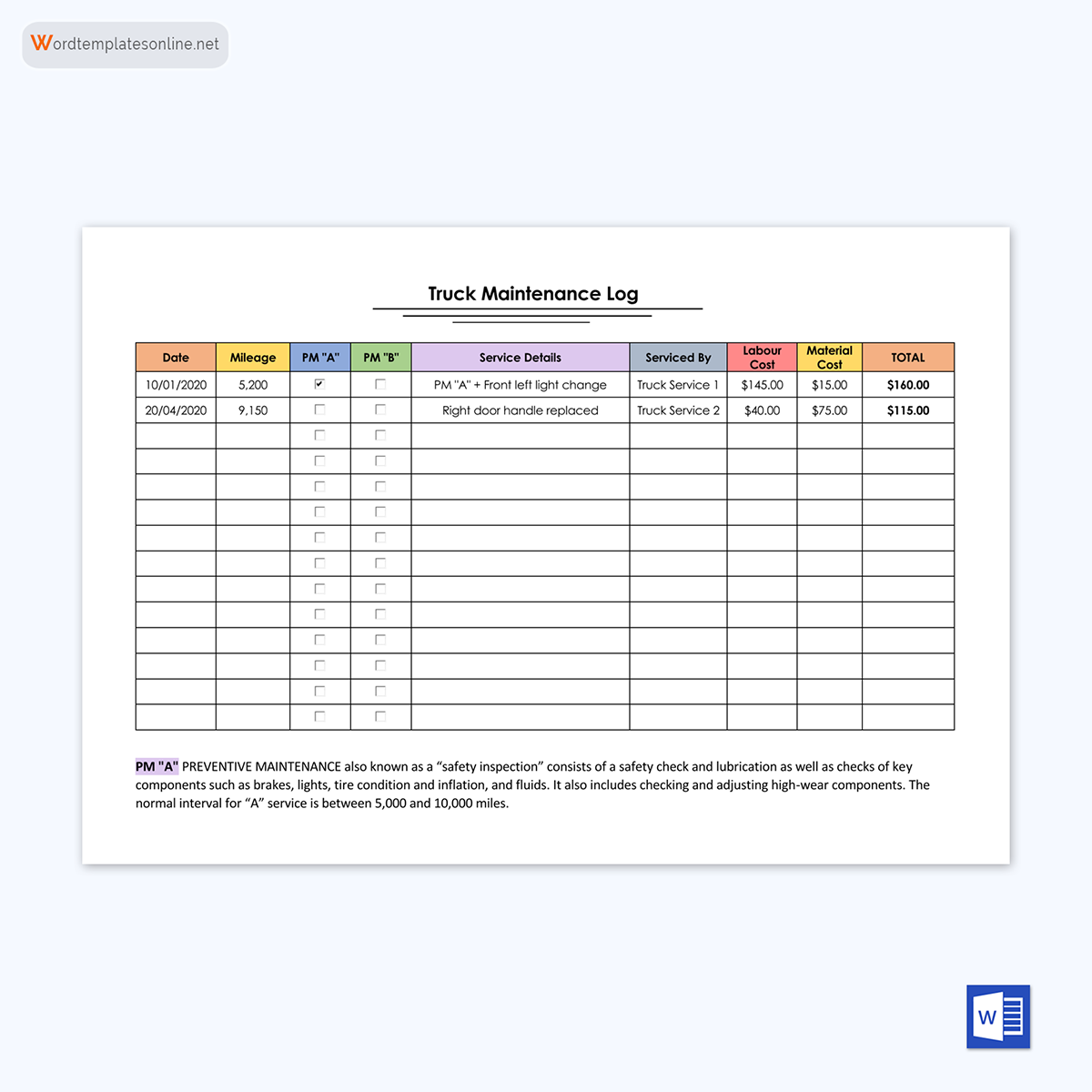
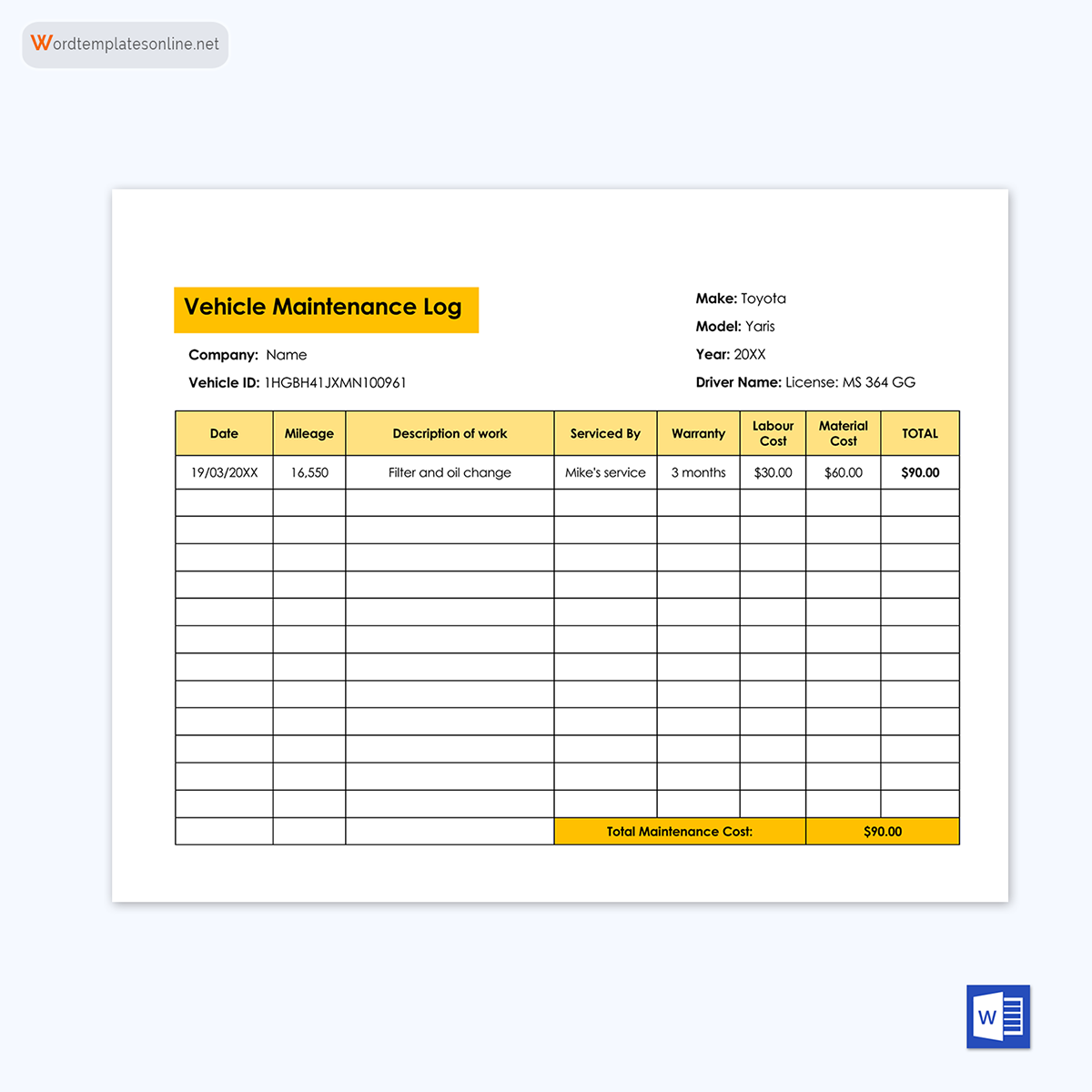
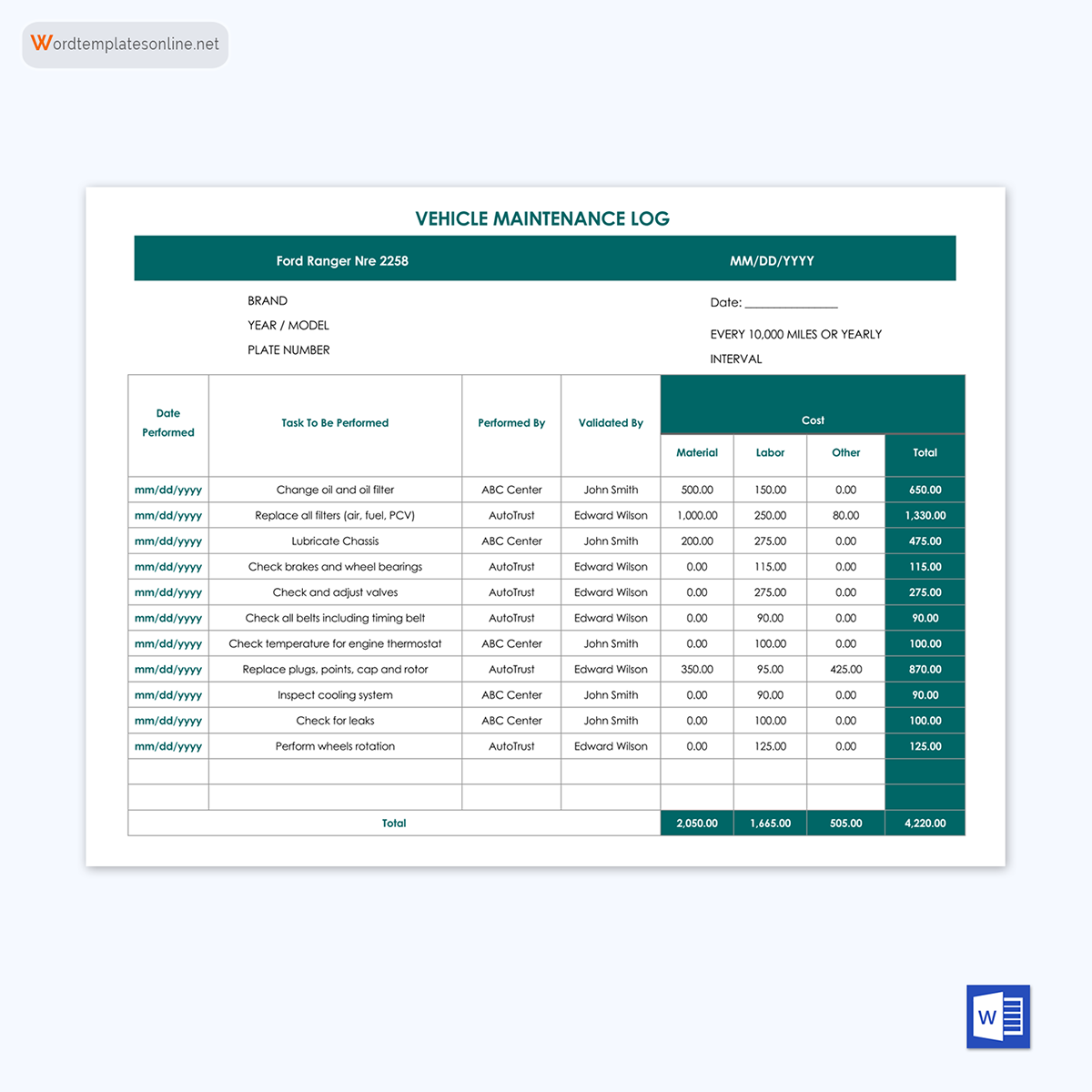
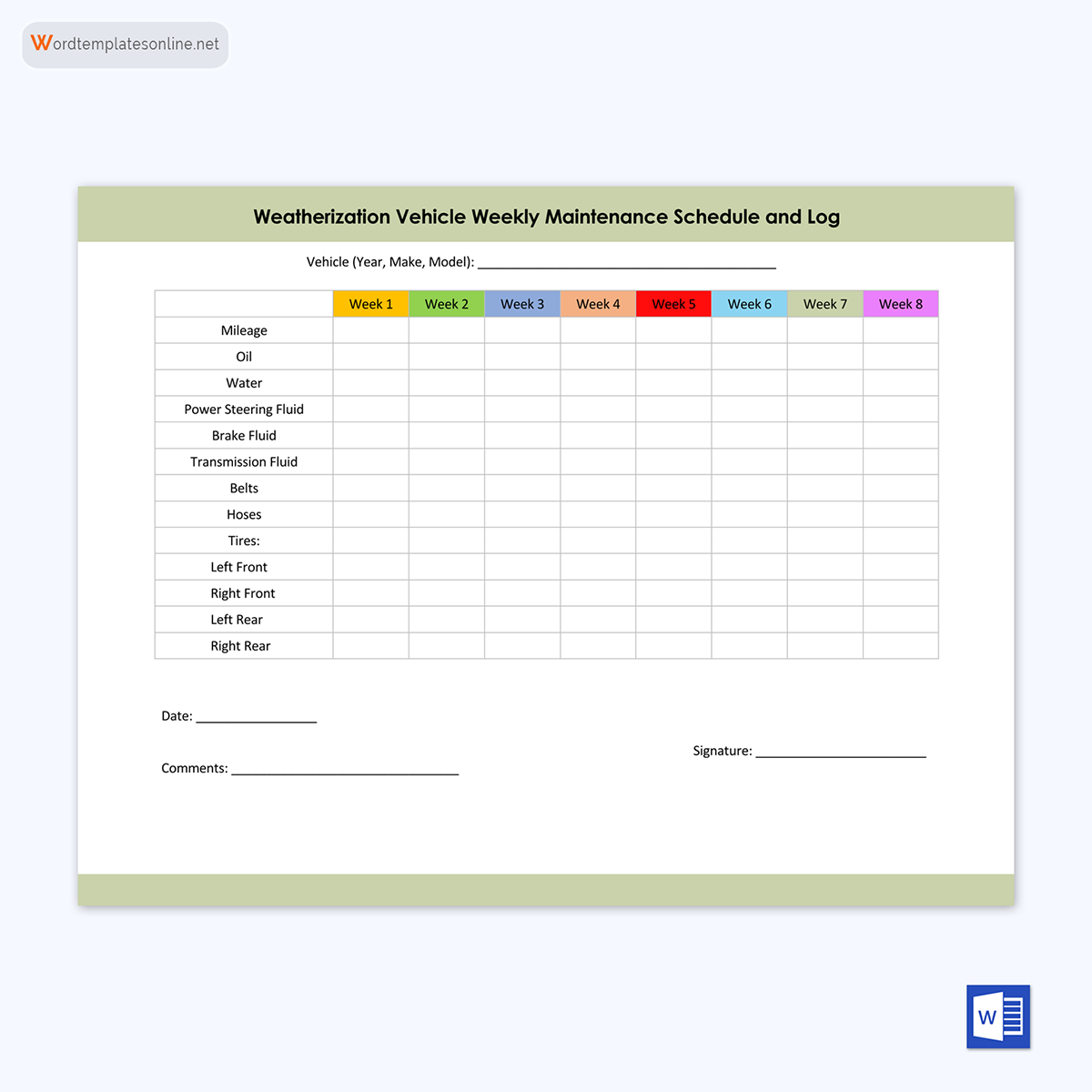
Common Maintenance Schedules
A maintenance schedule can help the car owner ensure that necessary steps are taken to prevent problems before they occur. They also ease the owner’s ability to fill in the log information. Car owners must be well informed about the standard maintenance schedules to determine the kind of log they would need.
The standard maintenance schedule logs include the following:
Monthly maintenance log
This log is a vehicle checklist that the car owner goes through at the start of each month. It helps ensure the proper functionality of the vehicle. The checklist includes checking the belts and hoses. When conducting this check, the car owner looks for worn belts, rotten rubber sticking out of the belt, or crumbling hoses that can be found under the hood of the car.
It should note the condition of the belts and hoses. Next, the car owner should check the oil level by removing the dipstick. The owner should check if the levels are low or if there are any leaks. The observations made should be noted in the log. The tire pressure of all the tires should also be checked. If the pressure in all the tires is low, the owner should inflate them; if only one tire is affected, the owner should check for punctures or damage.
Finally, the car owner should check the coolant level to see if more needs to be added. Fifteen minutes are enough to complete this entire checklist.
Quarterly maintenance log
Like the monthly maintenance log, the car owner must complete a particular checklist. A quarterly maintenance log is filled every 3 months or 3,500 miles. The oil is checked as part of the checklist to see if it needs to be changed and if the oil filter needs to be changed. The car owner should also review the owner’s manual to check whether the manufacturer recommends different oil change intervals. Next, the corrosion or wear of the car battery should be checked and cleaned to prevent blockages that prevent the car from running correctly.
The fluids of the car should also be checked. The windshield washer fluid should be complete, but extra can be added if the car owner sees it as necessary. The levels of brake fluid, transmission fluid, and power fluid should also be inspected. Finally, the air filter should be checked and replaced if found dirty.
Biannual maintenance log
This log should be filled out every 6 months or 7000 miles. First, the car owner should check the condition of the wiper blades and have them replaced if they are worn or working improperly. Next, the indicator and headlight lights should be inspected with the help of a friend, who will check whether or not they are working. The brake lights, turn signal indicators, and horns should also be checked.
The car owner should then check the brake pads for wear and tear. The car owner should also check the spare tire and inflate it if needed for future use. Finally, the exhaust system should be checked for visible damage, rust, or lost parts.
Making a Maintenance Log- What to Include
The log should clearly outline the car’s details. It should also help the car owner retrieve information about the car’s maintenance history. Owners of automobiles should therefore understand what to include in a log.
The following are the components of the log:
Data and mileage
It should begin by outlining the date of the service. The indicated date plays a critical role in keeping track of the car’s service intervals, like oil and filter changes. Furthermore, it ensures that the parts are used to the end of their useful life. The vehicle’s mileage during the service should also be indicated, as it determines the car’s maintenance schedule. The more miles a car has, the greater the risk of wear and tear in some parts.
Service provider
Secondly, the name of the person or business that provided the service should be indicated. In the event of problems, emergencies, or resale, this will preserve a record for a contact person for repairs. The service provider could be an independent contractor or the local out-repair shop of the car’s owner
Service description
The next step is for the car owner to give a detailed account of the service and maintenance work done. The indicated information should highlight any changes made to the car and inspections performed, among other information relating to the car. Using clear, concise bullet points instead of sentences or paragraphs helps in the review of the details by easing the readability of the records.
Condition of the car before and after service
The car owner should compare the conditions of the car before and after service to help identify possible issues and problems arising from the visit to the mechanic. The use of photos of car parts helps the car owner identify and avoid scammers. The quality of the services offered can also be ascertained by noting the color of the transmission fluid. Notes on the repairs suggested by the mechanic will help car owners determine the costs of regular services in the future.
Service cost
The service cost charged by the mechanic should be the last item to be indicated. However, if the car owner carries out a DIY repair, then the cost of the materials should be indicated in place of the service cost. It also determines if the price has increased, if the service provider is charging a higher price for the service, or if a discount has been given.
Related: Free Car (Vehicle) Repair Receipt Templates (Word | Excel)
Tools for Storing Maintenance Log
There are several tools that a car owner can use to store the details of the log. Identifying a convenient and reliable means of storing information is key to having organized and comprehensive records. It will also determine how easily the details can be accessed.
The following tools can be used to store the log:
Paper-based methods
Keeping a physical copy of your log may seem outdated, but it can be a practical and reliable method for recording and organizing your vehicle’s maintenance history. Using a printable template is an excellent option for creating a detailed record of your car’s maintenance information. It allows you to keep track of maintenance work done, service dates, and costs incurred in a well-structured manner. Additionally, it is a valuable tool when it comes to reselling your vehicle and increasing its market value.
Digital tools
Using digital tools to store and manage your vehicle’s maintenance records can be a convenient and efficient method. Downloading a customizable app, such as eCar, allows car owners to input basic information about their vehicle, including make and model, and access statistics, graphic charts, and reports about their car. These apps can also be used to manage multiple cars, making it easier to stay on top of routine maintenance needs.
Hybrid methods
Hybrid methods combine both paper-based and digital tools to manage your vehicle’s maintenance records. One option is to use Microsoft Excel, which offers spreadsheet templates that allow you to keep track of service dates, maintenance work done, and associated costs. It also helps identify when your car’s routine maintenance needs should be met by creating a schedule for them. This method offers the flexibility of having both physical and digital copies of your records, making it easier to access and manage your maintenance information.
Frequently Asked Questions
Yes, these templates can be found online. Pre-designed templates of printable logs in PDF format and Excel can easily be found by a quick Google search of “free vehicle maintenance log templates.” An automotive maintenance book can also be purchased online to provide the car owner with a notebook that meets their needs.
The best way to record car maintenance for multiple vehicles is to keep separate logs for each car. It helps the car owner avoid mixing up maintenance schedules. For instance, separate documents or tabs should be used for each cell when using Google Sheets.
The car owner can use the logs to conduct essential weekly checkups. The checkups may include tire pressure checks, car washes, and tire rotations.












